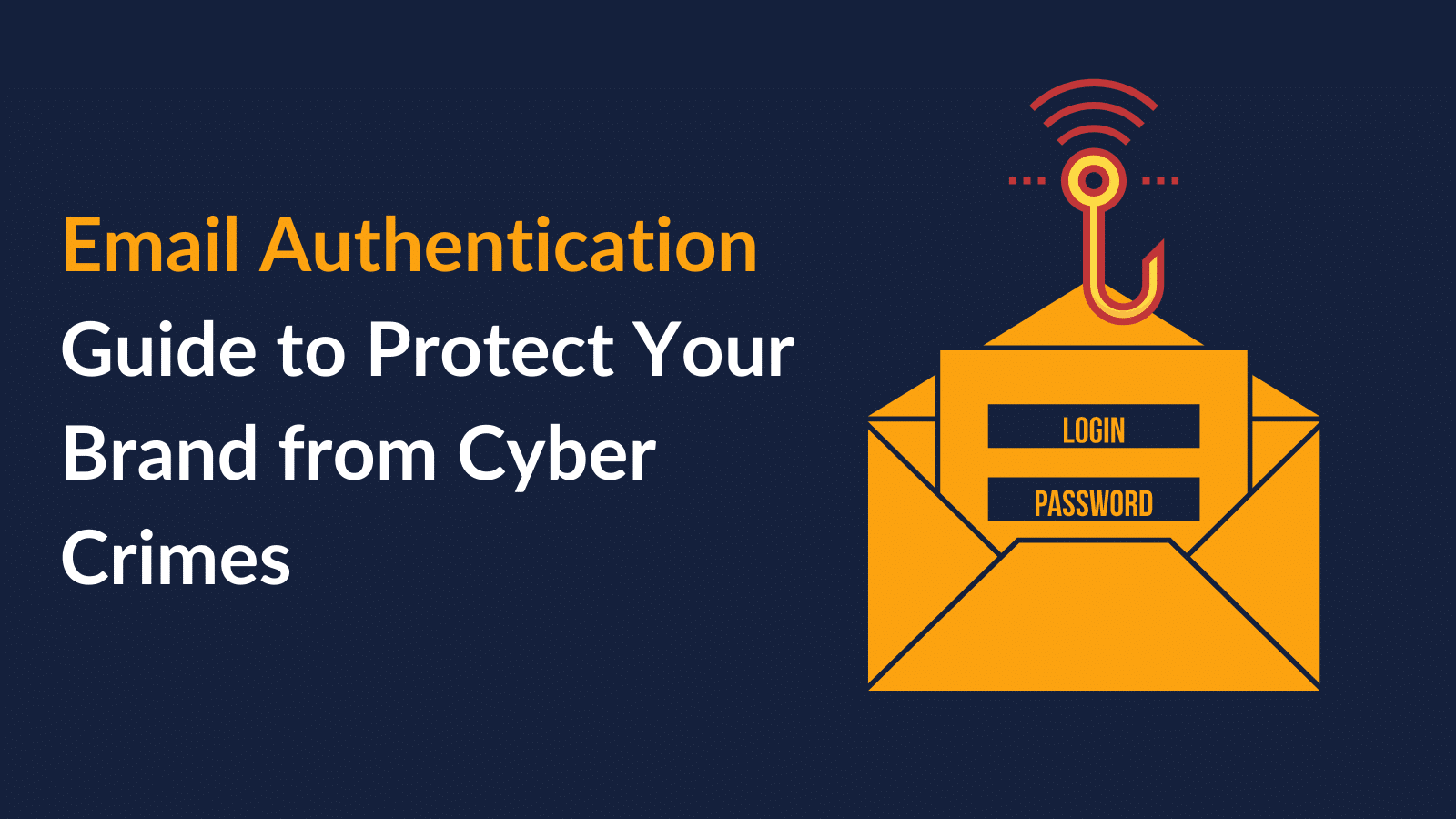Every marketer is trying to hit on the user inbox instead of ending up on the spam/junk folder. Because nobody likes getting spam/junk as it adversely impacts on the open rate of the email you send, which thus influences the ROI of the email marketing effort. Most of the time the emails will reach in the spam/junk folder because of the improper email authentication set up, or the changes were made to DNS and never updated.
It’s important to know about email authentication – one of the top five common reasons for poor deliverability to hit your emails in your user’s inbox. Let’s check what email authentication is, why it matters and the primary methods of email authentication.
Email Authentication: Introduction
ESPs such as Gmail, Yahoo and Outlook use email authentication to ensure whether something is spam, or is worth blocking completely to secure their users. Email authentication is important for both your brand and delivery success. Domain authentication adds an additional layer of trust for email service providers (ESPs), helping deliver your emails to inboxes because it demonstrates that you are a legitimate sender. Email authentication helps in knowing whether the source of an email is genuine or not. It is a process when the sender authenticates itself with the receiver ESP and then gets approved before sending emails.
The purpose of such email authentication is that the receiver ESP checks the source if it is genuine or not with their own policy, and then delivers it to its destination mailboxes. With the early way of designing of an email, it was easier for the Spammers to “forge”, or “spoof” the sender details to act like banks, auction sites, and energy corporations or otherwise to steal cash or send malicious software package. This way did not only harm the recipients of these scam emails, the sender that has been imitated are also likewise losing the reputation.
Types of Email That Needed To Authenticate
- Marketing & Promotional Email
- Customer Service Email
- Non-Bulk Corporate Communications Email
- Email From Mobile Devices
- Sales Email
- Receipts of Shipping Confirmation Email
- Monthly Billing Email
- Email Newsletters
3 Primary Methods of Email Authentication
There are high chances of being filtered or blocked by major ESPs with the lack of email authentication. As a genuine business, authentication is not an option; it is critically important to ensure your sender reputation is protected. There are three primary methods of authentication:
1. SPF
2. DKIM
3. DMARC
- SPF
The Sender Policy Framework (SPF) is an email-authentication method which is utilized to stop spammers from sending messages on behalf of your domain. With SPF, companies can publish licensed mail servers. SPF is a method for verifying you own an email address, and that the message coming from that email was not forged by a spammer. SPF uses DNS (Domain Name Service) as well as the DMARC (Domain-based Message Authentication, Reporting and Conformance) which give you as an email sender, the way to determine which mail servers are allowed to send emails for your benefit.
- DKIM
Domain Keys Identified Mail (DKIM)- This email-authentication technique enables the recipients to ensure that an email was surely sent and authorized by the owner of the domain. DKIM is a Domain Key Identified Mail authentication technique that produces a digital signature for the email which is part of the header and secured with encryption. This signature is not visible to the user and validation is done at the sender level. This enables the recipient to ensure that an email was surely sent and authorized by the owner or domain. Email delivery and domain authentication.
DKIM will increase the chances that your customers and clients receive and open your email and will protect your domain from getting misused by spamming. When you register for a free account with our email hosting service, we'll provide you with a unique private key for signing emails on your behalf. This key will be used to authenticate your domain as the owner of any given email, as well as to verify to receiving servers that they are authorized to accept messages from your domain.
- DMARC
Another email authentication protocol is known as DMARC which stands for Domain-based Message Authentication Reporting and Conformance. DMARC is an email approval framework intended to shield your sender domain from being utilized for email spoofing, phishing tricks, and different cybercrimes. DMARC uses the current email verification systems, Sender Policy Framework (SPF) and Domain Keys Identified Mail (DKIM).
DMARC is an extension to the two existing authentication systems described above namely SPF and DKIM. DMARC allows the domain owner to publish their policy with detailed specification of the following:
• The mechanism that is employed (SPF or DKIM or both)
• How to deal with the email failures
• How to report for events that are covered in the policy etc
Conclusion
The email authentication process of email sender reputation ensure the legitimacy of domains which is done through a complete analysis and scrutiny. Email authentication protects mail sender reputation and in the process protects the new brands as well. Therefore, it is highly recommended that besides the process of validation and verification of the intended email ID's, one should also attain own email authentication too. This helps you to hit on the target client's inboxes and to stay out of spam/junk folder.
Content Source :-https://atozcybersecurity.blogspot.com/2021/10/email-authentication-guide-to-protect.html






